
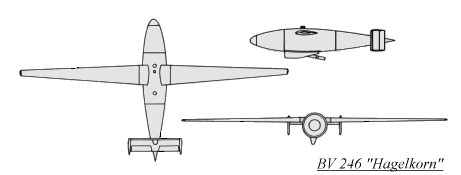 The Blohm & Voss BV 246 "Hagelkorn" (Hailstone) was originally
known under the designation of the BV 226. Designed by Dr. Richard Vogt,
the designation was changed to the BV 246 on December 12, 1943 when series
production was ordered. Basically, the idea behind the BV 246 was to attack
targets from the air at a distance, allowing the bomb to glide to the target,
while keeping the carrier aircraft out of anti-aircraft fire range.
The Blohm & Voss BV 246 "Hagelkorn" (Hailstone) was originally
known under the designation of the BV 226. Designed by Dr. Richard Vogt,
the designation was changed to the BV 246 on December 12, 1943 when series
production was ordered. Basically, the idea behind the BV 246 was to attack
targets from the air at a distance, allowing the bomb to glide to the target,
while keeping the carrier aircraft out of anti-aircraft fire range.
Span: 6.4 m (21') Length: 3.53 m (11' 7") Speed at target: 450 km/h (280 mph)


 |
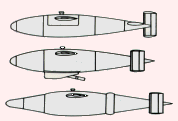
BV 226 BV 246 BV 246 "Radieschen" |
| The BV P.204
mixed-propulsion proposed ground attack aircraft project
was designed to carry the BV 246 glide bomb. Note the way the glide bomb's wings are bent, this was to provide "spring" away from the carrier aircraft when the BV 246 was released. |
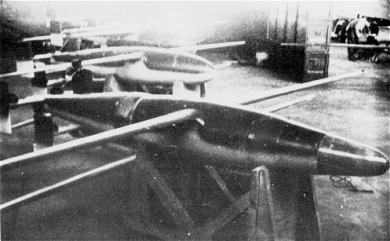
Above: Completed examples of the BV 246 "Hagelkorn" . Please note the modified BV 246 "Radieschen" glide bomb in the foreground, noticable by the nose and fuselage extension just behind the wings. |
Below: Testing of the BV 246 with a Focke-Wulf
Fw 190F-8
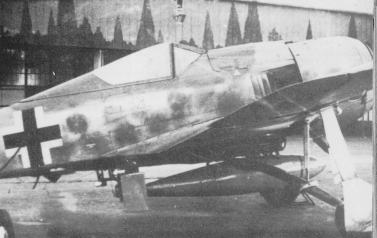 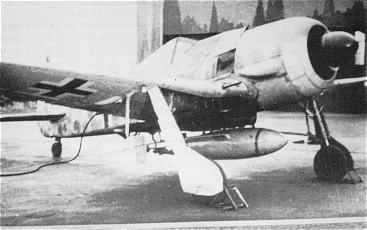 |
Left: A cutaway diagram showing the
location of the
Right: The Bv 246 "Hagelkorn"
glide bomb at the Cosford
internal
components of the BV 246 with the
Royal Air Force Museum in Shropshire, England.
"Radieschen"ultra-short
wave passive homing device
Photo by Graham Causer, May 1998....
|
External
Radieschen aerial Radio receiver connections Battery 
Gyroscopes Elevator activator |
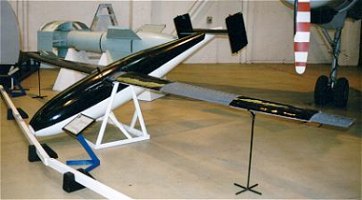 |